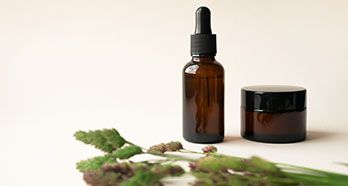8 Fun Aromatherapy Facts
If like me you are treated like a ‘hippy’ every time you bring up Aromatherapy and its be benefits, then the following facts are sure to put your friends in their place and prove once and for all that aromatherapy is far from being a recent phenomenon.
In fact, you could argue that aromatherapy is older than the medicinal practices we use today.
Fact One: Aromatherapy has been used for over 6000 years, first by the Chinese who used to burn special herbs to encourage harmony and well-being. They are believed to have identified over 300 herbs that could offer health benefits when burned.
Fact Two: The Egyptians regularly used incense, bath oils and massage ointments but are best known for using essential oils during the embalming process. During a special ceremony, participants wore a hat made of oil which would melt and release fragrances.
Fact Three: Hippocrates (the father of modern medicine) used aromatic fumigations to rid Athens of the plague. He also used aromatherapy baths and massages in his treatments.
Fact Four: Perfumes were first developed in Arabia where they were used to help heal injuries. The use of essential oils and fragrances for healing was brought to Europe by soldiers returning from the Crusades.
Fact Five: During the Dark Ages Aromatherapy was forced to go underground as the Catholic Church banned the use of natural remedies. They believed illnesses were a punishment of God which only prayer and bleeding could cure. This ban lasted for centuries.
Fact Six: During the Renaissance and Enlightenment era, herbal remedies were overlooked in favour of abstract scientific methods.
Fact Seven: Aromatherapy as you and me know it was discovered by accident in the 1920s by French Chemist Rene Maurice Gattefosse. He soaked his hand in Lavender after burning himself – as he didn’t have anything else to hand – and was surprised to find that his wound healed quickly. He was also the first person to coin the term ‘aromatherapy’.
Fact Eight: Essential oils are most often described by their odours and scents (otherwise known as ‘notes’) and fall under the following groups: Floral (Rose, Jasmine, Lilac and Gardenia); Citrus (Grapefruit, Lemon, Mandarin, Orange and Tangerine); Mint (Peppermint and Spearmint); Woody (Cedarwood and Sandalwood); Herbaceous (Basil, Marjoram and Thyme); Earthy (Oakmoss and Patchouli) and Spicy (Cinnamon, Cloves and Nutmeg).
Interesting right? And a little fun too…
So the next time you hear someone discredit the quality of Aromatherapy, why not throw these fun facts at them. I bet they’ll be surprised…
No related posts.
 Looking for Qualified Advice on Herbs & Supplements?
Read our health guides, quick tips and popular posts on a range of health conditions, products & fitness
Looking for Qualified Advice on Herbs & Supplements?
Read our health guides, quick tips and popular posts on a range of health conditions, products & fitness
- Aromatherapy (19)
- Cold, Cough & Flu (12)
- Food & Supplements (38)
- Hair (17)
- Headaches & Stress Relief (18)
-
Health & Home (117)
- Allergies (4)
- Beauty (21)
- Blood & Circulation (10)
- Bone Strength & Dental (2)
- Breathing Conditions (3)
- Concentration & Focus (8)
- Digestion & Heartburn (7)
- Exhaustion & Fatigue (15)
- Homewares (3)
- Libido (3)
- Mens Health (22)
- Mother & Baby (1)
- Muscle & Joint Pain (9)
- Sleep Aids (10)
- Stress (3)
- Womens Health (24)
- Homeopathy (38)
- How To's & Guides (128)
- Product Information (30)
- Seasonal Remedies (34)
- Skin Care (35)
- Weight Loss (19)
- Events & Things To Do (7)
- 2024
- 2023
- 2021
- 2020
- 2019
- 2018
- 2017
- 2016
- 2015
- 2014
- 2013
- 2012
- 2011
- 2010
- 2008
- 2007
- 2004
- 2002
- 2001







 At number 64, our Walworth Road Shops are featured in Time out London’s
100 best shops and we couldn’t be more delighted!
At number 64, our Walworth Road Shops are featured in Time out London’s
100 best shops and we couldn’t be more delighted!

 View our Catalogue online.
It is stocked full of our latest oils, beauty products, health foods & gifts.
View our Catalogue online.
It is stocked full of our latest oils, beauty products, health foods & gifts.